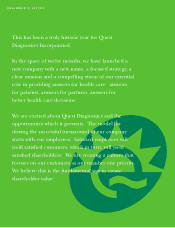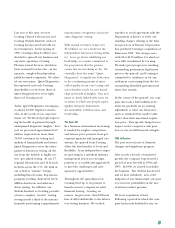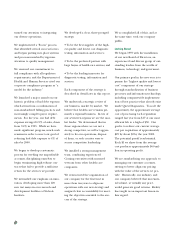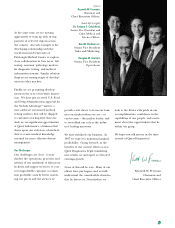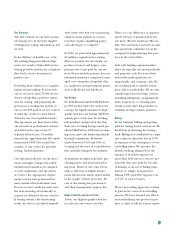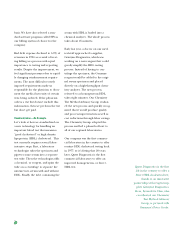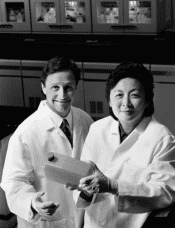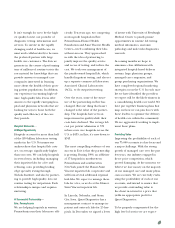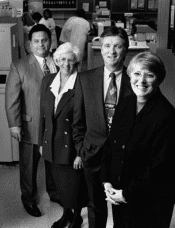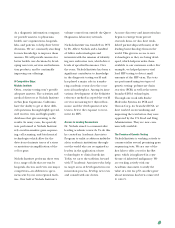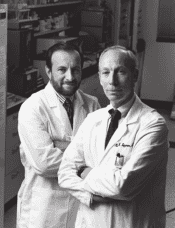Quest Diagnostics 1996 Annual Report Download - page 8
Download and view the complete annual report
Please find page 8 of the 1996 Quest Diagnostics annual report below. You can navigate through the pages in the report by either clicking on the pages listed below, or by using the keyword search tool below to find specific information within the annual report.
Quest Diagnostics is the first
lab in the country to offer a
direct HDL cholesterol test,
thanks to an innovative
partnership with reagent sup-
plier Genzyme Diagnostics.
Here, Bernadette Chin, who
coordinated our Chemistry
Test Method Advisory
Group, is pictured with
Genzyme’s Peter Cooke.
7
serum with HDL is loaded into a
chemical analyzer. The whole process
takes about 45 minutes.
Early last year, a doctor on our med-
ical staff approached a supplier,
Genzyme Diagnostics, which was
working on a new reagent that could
greatly simplify the HDL testing
process. Instead of having to cen-
trifuge the specimen, the Genzyme
reagent would be added to the origi-
nal serum specimen and placed
directly on a high-throughput chem-
istry analyzer. The new process,
referred to as homogeneous HDL,
takes eight minutes. Our Chemistry
Test Method Advisory Group evaluat-
ed the new process and quickly recog-
nized that it would produce quality
and process improvements as well as
cost reductions through labor savings.
The Chemistry Group adopted the
process and led a phased roll-out to
all of our regional laboratories.
Our company was the first commer-
cial laboratory in the country to offer
routine HDL cholesterol testing back
in 1977, so it’s fitting that 20 years
later, Quest Diagnostics is the first
commercial laboratory to offer an
improved homogeneous, or direct,
HDL test.
basis. We have also selected a stan-
dard software program called SYS as
our billing system of choice for the
company.
Bad debt expense declined to 6.9% of
revenues in 1996 as a result of treat-
ing billing as a process with equal
importance to testing and reporting
results. Despite the improvement, we
feel significant pressures due to rapid-
ly changing reimbursement require-
ments. The most difficult recently
imposed requirements make us
responsible for the physician to docu-
ment the medical necessity of certain
tests being ordered. If the physician
orders a test but doesn’t include this
information, then we perform the test
but don’t get paid.
Standardization—An Example
Let’s look at how we standardized on
a new technology for handling an
important blood test that measures
“good cholesterol” or high density
lipoprotein (HDL) cholesterol. This
test currently requires several labor-
intensive steps. First, a laboratory
technologist takes the specimen and
pipettes some serum into a separate
test tube. Then the technologist adds
a chemical, or reagent, and spins the
tube on a centrifuge to separate the
mixture into serum with and without
HDL. Finally, the tube containing the


